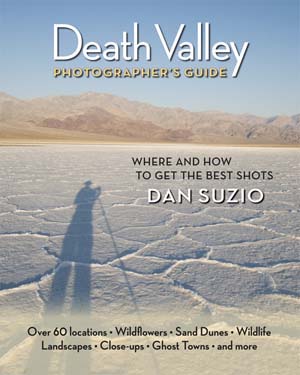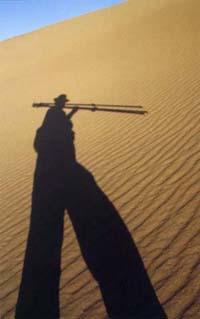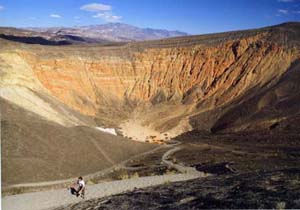Death Valley Photographer's Guide
by Dan Suzio

What do you look for when you scope out a three day weekend drive trip? A decent balance of driving to sightseeing, ready access to services, and great scenery come to mind. Regardless of the route, getting some good photographs always helps when sharing the story with others.
Today’s digital cameras solve a lot of problems for amateur photographers. But despite their technical aspects, in order to get a great shot you first need to do a little planning, preparation, and be patient.

Death Valley Photographer’s Guide is a quick read filled with tips, maps, and strategies for capturing the best images in—you guessed it—Death Valley. While focused on Death Valley itself (a terrific road trip destination!), the information shared by award winning photographer/author Dan Suzio can be applied to any other location, making it an indispensible travel book.
Suzio makes the outright assumption that the reader is already familiar with their own camera and equipment in hand and instead directs you to the specific sites, time of day, and techniques that lead to better end results.
A simple lizard shot can get pretty complicated in hurry. How do you frame the lizard on a rock? How much rock do you want to show? Which direction is the light source? What if that same lizard is on sand instead? How do you show texture on the rock or sand without a lizard in the shot? And all of that is predicated on you even finding a lizard. Thankfully, Suzio addresses all of this and more.

Both rules and suggestions are offered up in a friendly, direct manner. Accompanying images illustrate the author’s point. Every photo caption indicates his equipment settings giving the reader a good starting point. The 114 page book naturally has dozens of stunning photos showing what kind of shots are possible in Death Valley.
Death Valley Photographer’s Guide is broken into two main chapter sections. Suzio opens with strategies for shooting landscapes, wildflowers, ghost towns, and wildlife. The second half focuses upon Death Valley locations and resources. Maps and directions will lead you to the specific areas for popular landmarks and formations. The best (or most likely) places to find animals and wild flowers are highlighted.

Included are warnings about roads, floods, and where to inquire about approaching weather conditions. Death Valley is no place to wander unprepared.
Photographers know it takes more than a camera to capture a great image. Wherever your destination, the Death Valley Photographer’s Guide can get you that one step closer.
Harold O.
www.DeathValleyPhotographersGuide.com
Return from Death Valley Photographers Guide to Book Reviews